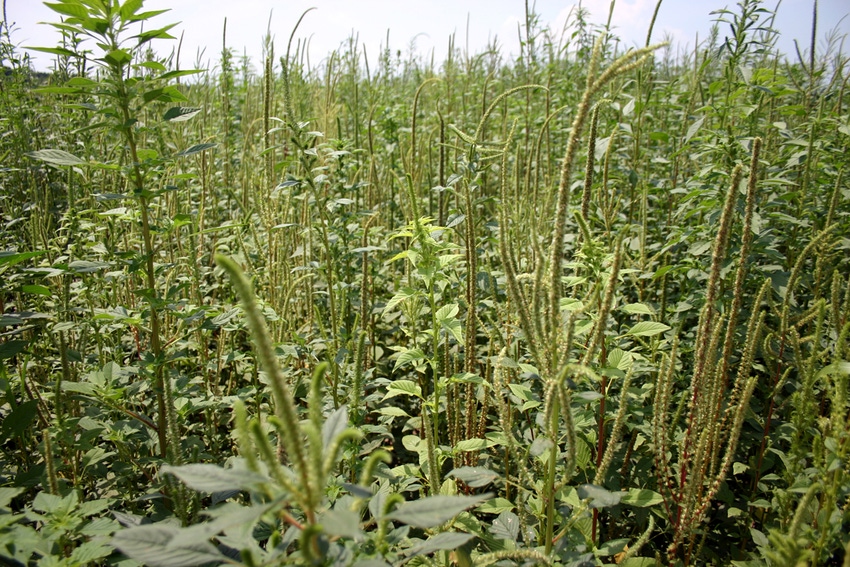
How to kill pigweeds and how to prevent them from germinating.Fields with escapes or that are pretty heavily infested this year will be major problems next year.Prolific seed production of pigweed insures that an escape can turn into an infestation.Combines are extremely efficient at scattering pigweed seed.Research to determine the effectiveness of windrowing and burning the trash behind the combine.What management practices best reduce the seedbank?
September 15, 2010

Throughout the year, we talk a great deal about how to kill pigweeds and how to prevent them from germinating.
As combines and pickers now move across Arkansas, we either have been successful or we have not.
Based on my observations around the state, some farmers have done a remarkable job. Others have had some escapes. It is interesting to see a very clean field across the turn row from one fairly grown up. I always want to stop and ask about the differences.
Obviously, there are many factors capable of causing these differences — Mother Nature and weather being the major ones.
We know the fields with escapes or that are pretty heavily infested this year will be major problems next year. The prolific seed production of pigweed insures that an escape can turn into an infestation. Many of our problem fields this year had only a few scattered pigweeds last year.
It is easy to determine how the infestation grew. A very common field sight is pigweed infestations in 6- to 10-foot strips every 30 feet across the field. It is not by coincidence that most combine headers are 30 feet wide and most of the trash falls in a 6- to 10-foot strip behind the combine.
Combines are extremely efficient at scattering pigweed seed. I have collected trash from combines after running in soybeans with a moderate infestation of pigweed and found 30 to 50 pigweed seed in a tablespoon of trash.
We are initiating research to determine the effectiveness of windrowing and burning the trash behind the combine. This has been an effective technique for reducing glyphosate-resistant ryegrass infestations in Australia.
Stalk mowers are almost as bad as combines to scatter seed. So, if you still have clean fields, it is imperative that equipment be cleaned before entering these fields. Untold numbers of farmers have told me they had no resistant pigweed last year in certain fields and the fields are heavily infested this year. No doubt, either the fields were not as clean as they thought or the seeds were brought in by equipment or water.
If the weeds do produce seed and we harvest the crop, what management practices give us the best reduction in the seedbank? We still do not have all the answers to these questions, but deep tillage where the soil is truly turned, not mixed, to a 10- to 12-inch depth has proven to reduce pigweed populations as much as 80 percent over standard disking or bedding in the fall.
Unfortunately, if the field must be re-bedded this fall or next spring, we lose the advantage of deep tillage. This practice only works in flat-planted fields.
We do not have data to compare disking and bedding in the fall to simply cutting stalks and allowing the seed to remain on the soil surface.
A rye cover crop planted in the fall and allowed to canopy until soybean or cotton is planted in the spring also reduces pigweed populations similar to deep plowing. The rye crop is desiccated prior to planting and cotton or soybeans are planted into the standing stubble.
It is also important to remember that pigweeds are day-length sensitive plants. This means they flower when nights are long and days are short. For this reason, many pigweeds that germinated in the warm April this spring, developed seed heads when they were no more than 8 to 10 inches tall. The ones that germinated in May waited until the nights began to get shorter in July and August before setting seed.
Pigweeds that germinate after crop harvest will develop seedheads and produce viable seed in a matter of three weeks. Just because the crop is out of the field does not mean that the pigweeds have surrendered. They have remarkable survival characteristics and we know that every seed produced this year is a potential problem for us next year.
This late-season seed management deserves our attention.
You May Also Like



